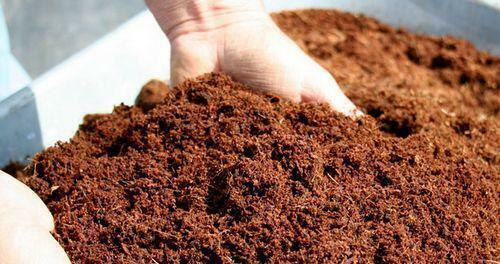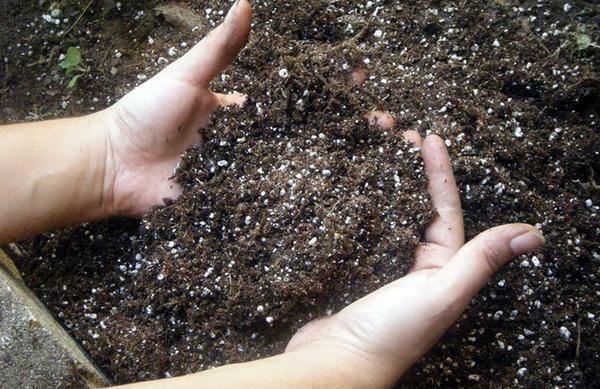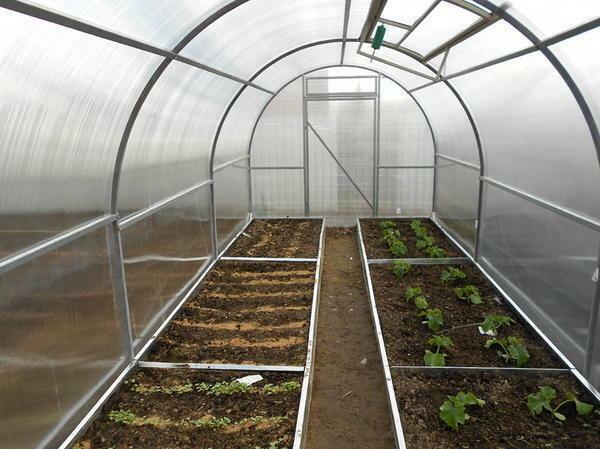 for growing plants in the greenhouse need the right temperature and air regime of soil must know the optimum temperature and its limits are grown in the greenhouse vegetables, fruits, berries and herbs. You also need to know all the ways, options and methods for adjusting the temperature to establish a good and proper microclimate in the greenhouse.
for growing plants in the greenhouse need the right temperature and air regime of soil must know the optimum temperature and its limits are grown in the greenhouse vegetables, fruits, berries and herbs. You also need to know all the ways, options and methods for adjusting the temperature to establish a good and proper microclimate in the greenhouse.
-
- optimum soil in the greenhouse polycarbonate
- Proper preparation of the soil in the greenhouse
- How to prepare the soil in a greenhouse in winter
- required composition of the soil for greenhouses
- fertile ground layer in a greenhouse
- Optimum temperaturesoil in the greenhouse( video)
Optimum soil in greenhouses polycarbonate
thoroughly consistent temperature control allows the vegetables and fruits grow actively and properly. In greenhouses and hotbeds, the optimal temperature for the soil is from 14 to 25 ° C.To ensure that the temperature does not adversely affect the cultivated vegetables and fruits, greenhouses and greenhouses should not be above or below this level.
 Toeplitz is a closed space in which can advantageously regulate the temperature regime
Toeplitz is a closed space in which can advantageously regulate the temperature regime
Poor phosphorus uptake and starvation occurs in plants in reducing the temperature indicator to 10 ° C, but if the temperature rises to 25-28 ° C, This overheats the roots, which leads to a deterioration in the absorption of moisture, respectively, the plants wither.
It is difficult to achieve this manually, therefore it is better to use new management technologies with different sensors that can be purchased at the store. Do not allow a sharp temperature drop when changing from day to night temperature. When something blooms, you can change the temperature by 3-4 ° C.
to raise the temperature in the following ways:
- landing lodge for the night with a special film to insulate them from the ambient air, through the creation of an air cushion. This raises the temperature by 2-3 ° C;
- Sidewalls are treated with a special foamed film( spunbond substitute);
- Mulching is carried out with a dark thin film at low plantings. With these methods, the temperature rises by 1-2 ° C.
To prevent fading of the fruit and burns on the leaves, it is impossible to raise the temperature in bright sun. To lower the temperature, it is necessary that fresh air be able to replace the old one( to prepare a new air mixture), and flow through the pediments in sufficient volume. Using screens from the film, it is possible to improve the climate by 2-3 ᵒС.Dry the room can be ventilated. To maintain the correct thermal regime, watering plants should occur strictly in the morning hours.
Proper soil preparation in the greenhouse
To grow a good early crop in greenhouses and greenhouses, it is necessary to spend a lot of effort and effort. To cost in the future paid off, you need to properly prepare the soil for the greenhouse and greenhouse. It should contain all the necessary nutrients, protection( etch) from pests is mandatory.
 Preparation of the soil in the greenhouse plays an important role in getting the rich harvest
Preparation of the soil in the greenhouse plays an important role in getting the rich harvest
If a greenhouse is not flooded in the spring water and is built on a good fertile soil, it is enough to simply pour into her compost or rotted humus( acid does not need), thenFill the ground and level it. But you need to make sure that the land is not waterlogged during irrigation, and when growing crops in such a land, do not neglect fertilizer.
In greenhouses and greenhouses, where the groundwater is located close enough to the surface, the beds should be raised above the ground to 30 cm. At the bottom of these beds, drainage should be prepared, which ensures uniform heating and airing of the soil.
For protection from pathogens of various diseases of the prepared soil, it is necessary:
- Disinfect the soil by spilling boiling water;
- Refresh film coating;
- Steaming;
- You can also treat the soil with formalin solution, or burn sulfur inside the greenhouse( dug in the ground checker).
The greenhouse for disinfection can also be treated with bleach. How much goes to the preparation - you need to add 500 gr of bleach to a bucket of water, mix the resulting mixture well and let it brew for at least 2 hours, stirring occasionally. This solution is carefully filtered, and it sprayed the entire surface inside the greenhouse, including the ground.
Sand and peat can be added to the soil for sowing seeds, but carefully monitor the plants. The most positive effect in the preparation of the earth is achieved by adding a sawdust to the solid layer or to the planting site. What kind of mixture to prepare - potash fertilizers, superphosphate and ammonium nitrate are introduced into the soil. Between the ridges, gaps are filled with manure( depth - 2 cm).
A layer of straw is placed beneath the fertile soil layers, which gives good results in the cultivation of crops in the greenhouse. Straw is taken from under rabbits, goats. The weeds picked up before ripening are taken. Straw is placed in a prepared ditch, sprinkle the necessary fertilizers from above and pours it all over with boiling water. After 3 days, this procedure must be repeated, then it is covered with fertile soil, after which it is possible to plant the seedlings. This procedure increases the growth and development of plants, due to decomposition of straw, heat and carbon dioxide are released.
In greenhouses and greenhouses with due care can provide a year-round harvest.
Seeds of cultivated crops must first be sown and grown in pots, and already ready sprouts are planted in beds in a greenhouse or a greenhouse. In this case, less effort and energy is spent to germinate the seeds.
How the soil is prepared for a greenhouse for the winter
If greenhouses and greenhouses are used to grow some crops, then dangerous pests and diseases accumulate in the soil layer, they need to protect the soil. The most optimal methods are complete soil replacement, or preventive sterilization. To prepare the soil for the winter, it is necessary to wash the inside of the covering material and remove the remains of the plants from the soil. The correct preparation and cleaning of the greenhouse creates favorable conditions for the future harvest
If it is not possible to update the soil, you need to prepare yourself:
- Remains of seeds and plants to remove;
- Use a special drill to collect larvae if necessary;
- Necessary fertilizers must be added to the ground;
- Light loose earth should be deeply loosened, and a heavy and clay dig.
If the coating consists of polycarbonate, it is necessary: plant greens, onions, radishes or by breaking the integrity of the structure to make the top layer freeze. Superphosphate and potassium chloride are introduced into the soil in the autumn. If the soil has high acidity, then it adds lime or dolomite flour.
Manure in this case is brought in the spring.
Heavy land for the planned planting of cucumbers must be dug, a depth of about 40 cm. If the winter temperature inside the greenhouse and the greenhouse is low, it will dry it. Hard and dry soil is not suitable for planting plants to avoid this, you need to fill it with snow.
Necessary soil composition for the greenhouse
In order to obtain a high crop yield in the hothouse bed, the soil composition should be optimal. Just peppered with warm garden soil in the greenhouse will not work. Even it needs to be enriched. It is necessary to take 5 parts of peat 2 parts of humus and one part of river sand and earth from the garden so that this mass is not acidic, it needs to add 3-4 kg of lime to each square meter. It will reduce the acid reaction of peat.
 Well matched greenhouse primer is the guarantee of the future good harvest
Well matched greenhouse primer is the guarantee of the future good harvest
Soils are divided, depending on the main constituents:
- Peat;
- turf;
- Sheet;
- Compost;
- Humic.
It is important to follow certain rules. If plants grow in winter, infrared film is placed under the soil. No oak leaves are used in leafy soil. In humus land, you need to monitor that the manure is completely decayed.
Fertile ground layer in the greenhouse
Many factors affect the thickness of the layer. Much depends on what kind of cultural plants will be cultivated and what composition the layer has. If the soil is dung, then a thick layer, whose height is 18 cm, practically does not allow air to penetrate to the manure, sealing it and slowing down the process of burning manure.
 A lot depends on the quality of the ground mix for greenhouses: from a full supply of plants with a set of nutrients to the quality and quantity of the harvest.
A lot depends on the quality of the ground mix for greenhouses: from a full supply of plants with a set of nutrients to the quality and quantity of the harvest.
A thick layer is needed for adult crops that need more depth and plants such as potatoes, onions, Spinach, lettuce - to crops that are cold-resistant. The beds in the greenhouse are fenced off with the help of boards. In a thin layer, heat-loving plants need: eggplants, tomatoes, peppers, cucumbers, basil, physalis. The thickness of this layer is from 9 cm to 13 cm.
Optimal soil temperature in the greenhouse( video)
You will have to show wit, skill and diligence to get a good harvest. But, experience comes with time, the main thing is to start right.


